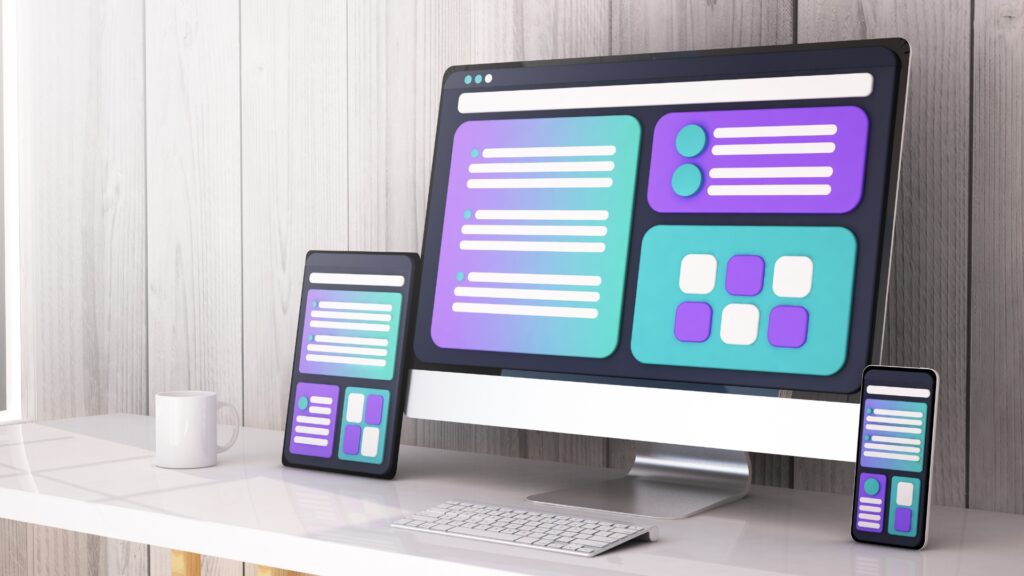Building your first website can be an exciting but daunting experience. You have an idea, you want to put it online, but where do you start? While the tools available today make it easier than ever to create a website, many beginners still fall into common traps that can slow them down or lead to a poor user experience. In this blog, we will cover the top 5 mistakes you should avoid when building your first website in 2024, helping you create a site that looks professional, functions smoothly, and attracts visitors.
Not Defining Your Purpose Clearly
Before choosing a platform or designing a logo, you need to define your website’s purpose. Are you building an online store? Is this a blog or a portfolio to showcase your work? Without a clear goal, your website can become confusing for you and your visitors. Your website’s purpose will guide everything, from design choices to content creation. For example, an online store needs clear product pages, while a blog needs an easy-to-navigate archive of posts. Without a clear goal, you risk creating a site that looks unfocused and lacks direction.
How to Avoid This Mistake:
- Write down your website’s purpose on paper or a document before you start.
- Think about your target audience—who visits your site, and what are they looking for?
- Design your website around that purpose to keep your site clear and user-friendly.
Choosing the Wrong Platform
When you start building a website, you have many platforms to choose from—WordPress, Wix, Squarespace, Shopify, and more. Each platform is designed for different types of websites, and choosing the wrong one can lead to a frustrating experience.
If you choose a platform that doesn’t fit your needs, you might find it hard to manage your site, add features, or grow it in the future. For example, if you pick Shopify but don’t plan to sell products, you might be paying for eCommerce features you don’t need.
How to Choose the Right Platform:
- Define your website type: Are you running a blog, selling products, or building a portfolio? Each platform has strengths. WordPress is ideal for blogs and content-heavy sites, while Shopify is perfect for eCommerce.
- Consider your budget: Some platforms, like Wix or Squarespace, offer all-in-one solutions but may charge higher fees than WordPress, which offers cheaper hosting options.
- Ease of use: If you’re not tech-savvy, pick a beginner-friendly platform. Wix and Squarespace are both very intuitive and provide drag-and-drop options, while WordPress offers more flexibility but a steeper learning curve.
- Scalability: Think about how your website might grow. Shopify is great for scaling an online store, but if you’re running a blog or portfolio, you may find more flexibility with WordPress or Squarespace.
- Check the templates and features: Make sure the platform offers design templates and features that align with your website goals. Look for mobile optimization, built-in SEO tools, and eCommerce capabilities if needed.
Check out these blogs to help you choose the right platform:
Best E-Commerce Builders: We go over the top e-commerce platforms that can turn your idea into a profitable business.
Best Website Builders for Affiliate Marketing Websites in 2024: If you’re getting into affiliate marketing, choosing the right website builder is crucial. Learn about the best platforms designed to maximize your affiliate earnings in 2024.
Best WordPress Hosting For Your Business in 2024: A fast, reliable website starts with the right hosting. Explore the best WordPress hosting options that make sure your site performs well and grows with your business.
Ignoring Mobile Optimization
In 2024, the majority of website traffic comes from mobile devices. If your website isn’t optimized for mobile, you’ll lose significant visitors. Many beginners make the mistake of designing their website on a desktop and forget to check how it looks on a smartphone. A website that looks great on a desktop but is hard to navigate on a phone will frustrate visitors. Google also ranks mobile-friendly websites higher in search results, meaning a poorly optimized site could affect your SEO.
How to Avoid This Mistake:
- Use responsive design—many website builders like Squarespace or Wix offer templates that automatically adjust for mobile users.
- Test your site on both desktop and mobile devices before launching.
- Keep it simple. A clean, minimal design will usually work better across devices than a cluttered one.
Overloading the Site with Features
When you’re excited about your first website, it’s easy to get carried away and add every feature you can find—social media feeds, pop-up forms, chatbots, and more. However, too many features can slow down your website and make navigating confusing.
Each extra feature adds weight to your website, making it slower. Slow load times frustrate users and can lead them to leave your site. More features also mean more maintenance and the potential for things to break.
How to Avoid This Mistake:
- Start with the essentials: Focus on what your site actually needs to function properly. For example, an About page, a Contact page, and basic service/product details might be all you need to launch.
- Limit the use of plugins and widgets: While it can be tempting to add live chat or a pop-up form, too many can slow your website down or cause technical issues. Choose only the features that align with your goals.
- Prioritize user experience: If a feature doesn’t directly improve the user experience, consider leaving it out. A fast, easy-to-navigate site will always outperform a slow one packed with unnecessary tools.
- Use lightweight themes or templates: Many website platforms provide optimized themes designed to load quickly. Look for those marked as ‘lightweight’ or ‘fast-loading’ to avoid slow page speeds.
- Test your website’s speed using tools like Google PageSpeed Insights or GTmetrix. These tools will show you what’s slowing your site down and offer suggestions to improve performance.
Neglecting SEO from the Start
Search Engine Optimization (SEO) might sound complicated, but it’s essential if you want your website to appear in search results. Many beginners think they can focus on SEO later, but starting early will save you time and effort down the line.
SEO helps search engines like Google find your website and show it to people who are searching for topics related to your site. Without it, you might have a beautiful website that no one ever finds.
How to Avoid This Mistake:
- Learn the basics of SEO. Focus on keywords, meta tags, and image alt texts when creating your content.
- Set up Google Analytics and Google Search Console from the start. These free tools will help you track traffic and identify areas where you can improve your SEO.
- Use tools like Yoast SEO and Semrush (for WordPress) or other SEO plugins to guide you as you build. These tools will give you real-time feedback on your content’s SEO performance, making it easier to optimize your website from the start. They analyze factors like readability, keyword density, and meta descriptions, which are crucial for ranking higher in search results.
Why? These tools make SEO less intimidating. They break down complicated concepts and provide actionable suggestions, helping you improve your site’s SEO step by step. Semrush, for instance, can also help you find the best keywords for your site and analyze your competitors’ SEO strategies, giving you an edge in search rankings.

Starting from $10.83/month (yearly)
14 Days Free-Trial
Key Features
Extensive SEO toolkit with analytics and reporting.
Keyword research, site audit, and competitor analysis tools.
Content marketing and social media management features.
Why We Recommend It
Provides a comprehensive set of tools for digital marketing.
It helps improve website visibility and search engine ranking.
Supports a wide range of marketing activities beyond SEO.
Pros & Cons
- Very detailed and comprehensive data
- Regular updates with new features and improved capabilities
- Integrates with other digital marketing tools and platforms
- It can be overwhelming for beginners
- High subscription cost for advanced features
Conclusion
Building your first website is a rewarding experience, but it’s easy to make mistakes along the way. By avoiding these common pitfalls—failing to define your purpose, choosing the wrong platform, ignoring mobile optimization, overloading your site with features, and neglecting SEO—you’ll be on your way to creating a successful, user-friendly site. The key to a great website is simplicity and focus. Start small, optimize for mobile, and grow your site as you learn more. Avoid these mistakes, and you’ll build a website that serves your visitors well and meets your goals.





